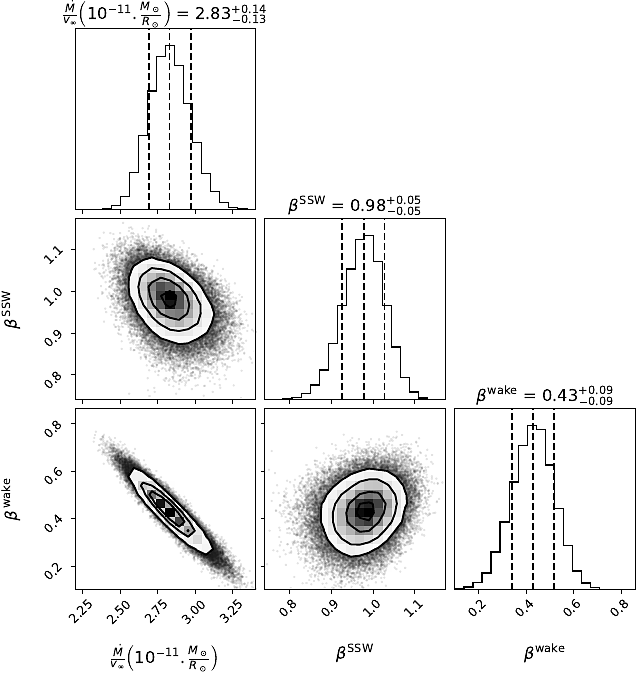Unveiling the intensity-dependent wake structure of Vela X-1 using MAXI/GSC

Unveiling the intensity-dependent wake structure of Vela X-1 using MAXI/GSC
Abhisek Tamang, Kinjal Roy, Hemanth Manikantan, Ajith Balu, Biswajit Paul
AbstractContext. Vela X-1 is among the earliest discovered high-mass X-ray binary (HMXB) pulsars. In such systems, the companion's stellar wind is strongly affected by ionisation from X-rays emitted by the compact object. A smooth, isotropic stellar wind model cannot account for the observed orbital variation in absorption column density. A stream-like photoionisation wake trailing the neutron star has been proposed to explain this variation. Aims. We investigated the variability of the circumbinary environment at different intensity levels of the Vela X-1 and used a model similar to the above-mentioned stream-like photoionisation wake to explain the asymmetric absorption column density present in the source. Methods. The 2.0-20.0 keV MAXI/GSC spectrum was well modelled with a Comptonised continuum absorbed by local and interstellar material. Nearly 13 years of MAXI/GSC data was used to constrain the variations in absorption column density in Vela X-1 from orbital-phase and intensity-and-orbital-phase resolved spectroscopy. Results. The long-term light curve of Vela X-1 shows orbit-to-orbit intensity level variations without any apparent super-orbital periodicity. The orbital-phase resolved spectroscopy in multiple intensity levels reveals asymmetric variation in absorption column density changes across the intensity levels. Conclusions. We confirm that the orbital variation in absorption column density in Vela X-1 cannot be explained by a smooth stellar wind alone using long-term MAXI/GSC data. An additional component, such as a photoionisation or accretion wake, is required. The wake structure is present across intensity levels, with geometry varying by intensity. The long-term MAXI/GSC data enabled us to vary wake parameters and derive best-fit stellar wind parameters for the time-averaged intensity, reproducing observed absorption column density across intensity levels. (Abbreviated.)